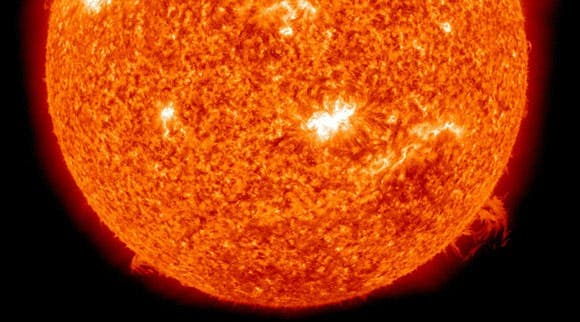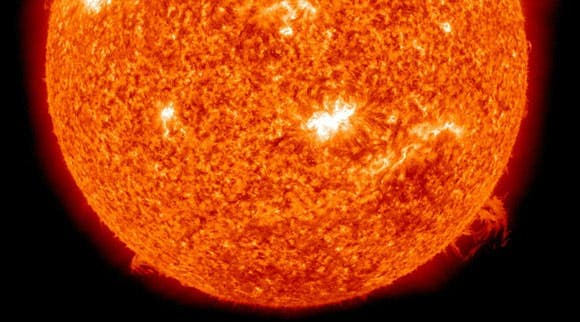
On Monday the sun fired up an X class solar flare, the most powerful of its kind, the effects of which are expected to be felt by us today (Thursday) and tomorrow (Friday), and are expected to last somewhere between 24 and 48 hours. This may lead to disruptions in radio communications, interfere with satellites and affect power grids.
This is the sun’s strongest magnetic eruption since 2006 – an X class solar flare usually occurs when magnetic field lines on the sun’s surface in effect get short-circuited, releasing large amounts of energy into space. In the first phase of the eruption, X radiation traveling at the speed of light reached Earth in 8 minutes, which triggered a geomagnetic storm in our planet’s magnetic field that interrupted radio communications in China. Now, the most damaging effects of the flare will occur when streams of protons and electrons, the so-called coronal mass ejections, or CMEs, reach Earth the 93 million miles separating the two bodies being expected to be traveled by mid-day Thursday.
NOAA issues alerts to any industries that could be affected.
“These alerts are sent out to electrical power grid companies, airlines, GPS, military, ocean shipping routes, just to name a few industries that may be affected by the impacts of a solar flare and associated coronal mass ejection (CME) like the one we just had,” Chamberlin told SPACE.com.
Don’t expect havoc or anything calamitous – it’s nothing to be alarmed about. At least, it won’t measure up to past solar flares, like the one in 1972 when a solar flare shut down telephone lines in the state of Illinois or in 1989 when another solar flare knocked out power for 6 million people in the Canadian province of Quebec.
Instead, I’d suggest you (northern) folks just sit back and enjoy the light show, since CMEs applify the visuals for the famous Northern Lights (Aurora Borealis) phenomena, making them vivider and even visible in the northern part of the US. Like we reported earlier, this is the perfect time to dust off your cameras and start shooting!
“Further northern lights (aurora) displays are possible sometime over the next two nights if skies are clear and the activity peaks in your local nighttime,” according to a report from the British Geological Survey.
The biggest sun flare in the Sun’s current 11 year cycle will be in 2013, and in the modern world we live in where computers are an integral part of our lives, this could pose serious problems. Modern computer chips are extremely voltage sensitive and scientists warn that there is a very real probability that eventually a solar flare could knock out all modern electronics…









